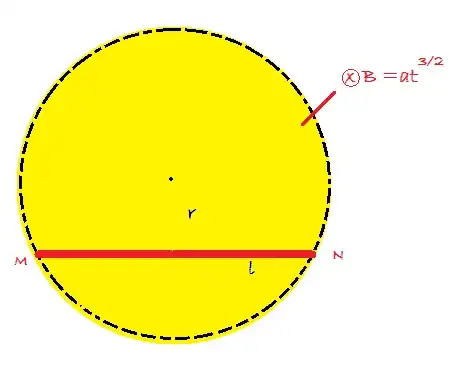A metal rod of length $l$ is placed (as shown in figure) in a cylindrical time varying magnetic field. Find the potential difference across it.

My answer:
As electric fields as forming circles around the centre with magnitude $$\frac12r\frac{dB}{dt}$$ whose magnitude is same along any chord at a fix distance from centre: $$\Delta V=E.l=\frac12r\frac32at^{\frac12}.l$$ $$\Delta V=\frac34arlt^{\frac12}$$
My question: Is $\Delta V =V_M-V_N$ or $\Delta V=V_N-V_M$ $\bf OR$ equivalently which side is at high potential?
Possible
$(i)$ As Field lines are circular from $M$ to $N$, $M$ must be high potential.
$(ii)$ As this field line apply a force on electrons- in the rod- towards left, then $M$ must have excess $e^-$ and $N$ must have deficiency; so $N$ would be high potential as $M$ is $(+)$ and $N$ is $(-)$.